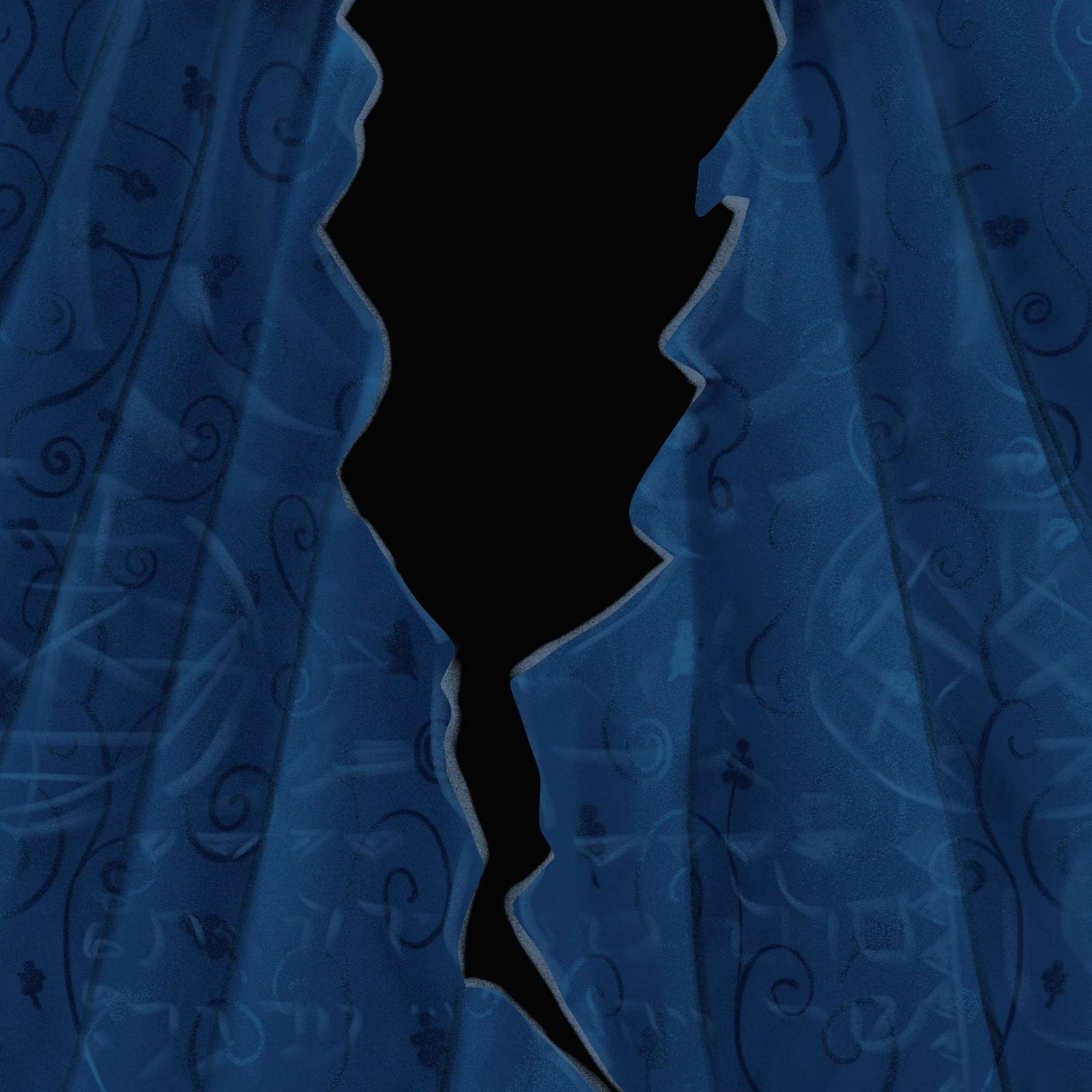6. The Veil
Key Verses: Matthew 27:45-52, Hebrews 2:5-15, 10:19-21
In the sacred dwelling of the Tabernacle, within the Holy of Holies, hangs the Veil
– a tapestry both ornate and weighty. It’s purpose, profound and significant, is to stand as a barrier between the High Priest and the very presence of God. It is as though this Veil conceals the entrance to Heaven itself, veiling the divine realm.
This sacred shroud finds it’s resonance in the Temple of Jesus' day, the epicenter of Jewish reverence and worship. So incredible are the expectations behind this Veil that the priests, adorned with bells and tethered by ropes, tread with caution, fearing divine retribution in the Presence of God. In Matthew 27:45-52 and Hebrews 2:5-15, 10:19-21, the narrative unfolds. Hebrews 10:1 echoes,
"The law is only a shadow of the good things that are coming—not the realities themselves."
Through endless, repetitive sacrifices, the law falls short in perfecting those who approach to worship. And then, in the account of Jesus upon the cross, we read, "the veil of the Temple was torn in two" (Matthew 27:51). What significance lies in this tearing? Let's journey through three curtains, we are all quite familiar with.
Curtain Number 1 mirrors the Veil of the Temple – a tapestry woven with tradition and expectation.
Behind it, the hopes and dreams of Israel dwell. As this curtain rips, a revelation dawns: the places we anticipate encountering God, those entangled in religious trappings, are but shadows of a greater reality. The sun stands higher than its shadow.
Curtain Number 2 weaves the fabric of personal fears and disappointments, shaping our worldview.
This curtain, nurtured by experiences, proves resistant to tearing. How we narrate our stories stitches this curtain together.
But Curtain Number 3, is articulated in Hebrews 10:19-20:
"Therefore, brothers and sisters, since we have confidence to enter the Most Holy Place by the blood of Jesus, by a new and living way opened for us through the curtain, that is, his body."
Jesus, the very source casting a shadow upon the Temple Veil, is the good thing awaited. His bleeding brings forth access to God, transcending the offerings of the curtains of Tradition and Worldview. Jesus offers an intimate connection with God through his very being, his body.
In this revelation, the Invisible God emerges, not as a distant deity in a Temple, but as a neighbor on a cross. The blessing of God's overwhelming presence takes the form of bleeding on a cross, challenging preconceived notions. Sometimes, the divine encounter appears different than expected. Yet, through faith and perseverance, one can discern the goodness of God beyond the shadow – a mere silhouette, for something substantial is required to cast such a profound shadow.


